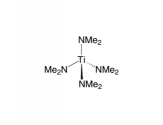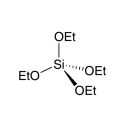The money raised is not the impressive part here, but rather that they already got orders for 230 million RMB. I posted this a few weeks ago when they announced that number. It was quite impressive considering they've just started mass producing chips. Keep in mind that is a larger number in order revenue than what Kunlun-2 has achieved thus far. That shows the massive market in China looking to get off American product. 230 million -> $30 to 35 million. My guess that's around 20000 chips or more ordered. That's pretty good for a new product.A chip company raised 2 billion yuan in 15 months.
Tianshu Zhixin launched the general-purpose GPU design in 2018, and its "Tiangai 100" achieved mass production last year, with product orders exceeding 230 million yuan.
The one thing that really annoyed me about Tianshu is that they said Nvidia has 95% of the market and Chinese chipmakers fight for the remaining 5%. That is real defeatist attitude.
This is the kind of stuff that really helps them. Inspur will help putting great performance into these new Chinese chips. All these new domestic chipmakers work with Inspur to put their product in actin.
took only 1 year for them to start mass producing Tiangai 100. From when mass production start in December of 2021 until August, they have now served over 200 types of AI training. Uses 7 nm technology like most other Chinese AI chips. Hint hint, SMIC N+2 will handle this eventually.
They have also shown Zhikai-100 (智铠100) recently and that will start mass production at end of this year. It's already getting tested with first set of clients. So definitely keep an eye on them.
But there are so many new guys now and we will have to wait a while to see who "wins"
Ideally for China, this downturn will force TSMC and Apple to stop pushing as hard for next generation chips. At the same time, SMIC needs to speed up its advanced node production. I know that it's probably more profitable for them to keep building fabs for 28 nm and higher nodes. However, Chinese gov't needs to step in and tell SMIC to focus on expanding its advanced node production.A sign of things to come, Apple refuse to accept TSMC price hike. TSMC bargaining power is slowing ebbing, can't ask customer to pay extra premium especially IF its your only sole client for the 3nm technology, They are now regretting ditching Huawei....lol
The Mainland Chinese tech company had been reading this, the reason why they won't invest a battery factory in the US to service Apple, exclusivity is a double edge sword, your company may grow exponentially BUT you are at their mercy and whims.
And I'm thinking the much hype Apple Car is vaporware, expected to be release in 2025, by that time its Chinese Rivals had taken over the market. Hoping to seizes the premium segment with the downturn and incoming depression, good luck with that and lets see IF it hit the ground running.
With demand cascading and massive increase in FAB capacity, who among the major FABS will thrive?
There are so many Chinese chipmakers who are in trouble if TSMC gets cut off from them. The sooner they get shifted to SMIC's N+1/N+2 process, the sooner TSMC will really feel the pain. Long term, TSMC's biggest competition is China, not Samsung.
When TSMC and MediaTek start to lose orders to mainland firms, they will need to start cutting staff. When that happens, I would bet most of them would rather move to Shanghai than Arizona. The thing that American semiconductor industry complains about is not having enough people going into this industry. That's why they want to bring in Taiwanese workers. Based on personal experience, Taiwanese are not like HKers. Aside from the ones with Western roots, they rest of them move to mainland or HK for better opportunity in life. And if you can continue to weaken TSMC/MediaTek, most of the people that leave will come to mainland to work!
That's how you win in this. It's the people behind these companies that drive them forward. You need to get the best people. The way to do that is continually making the mainland firms more appealing to them and making Taiwanese firms weaker.


